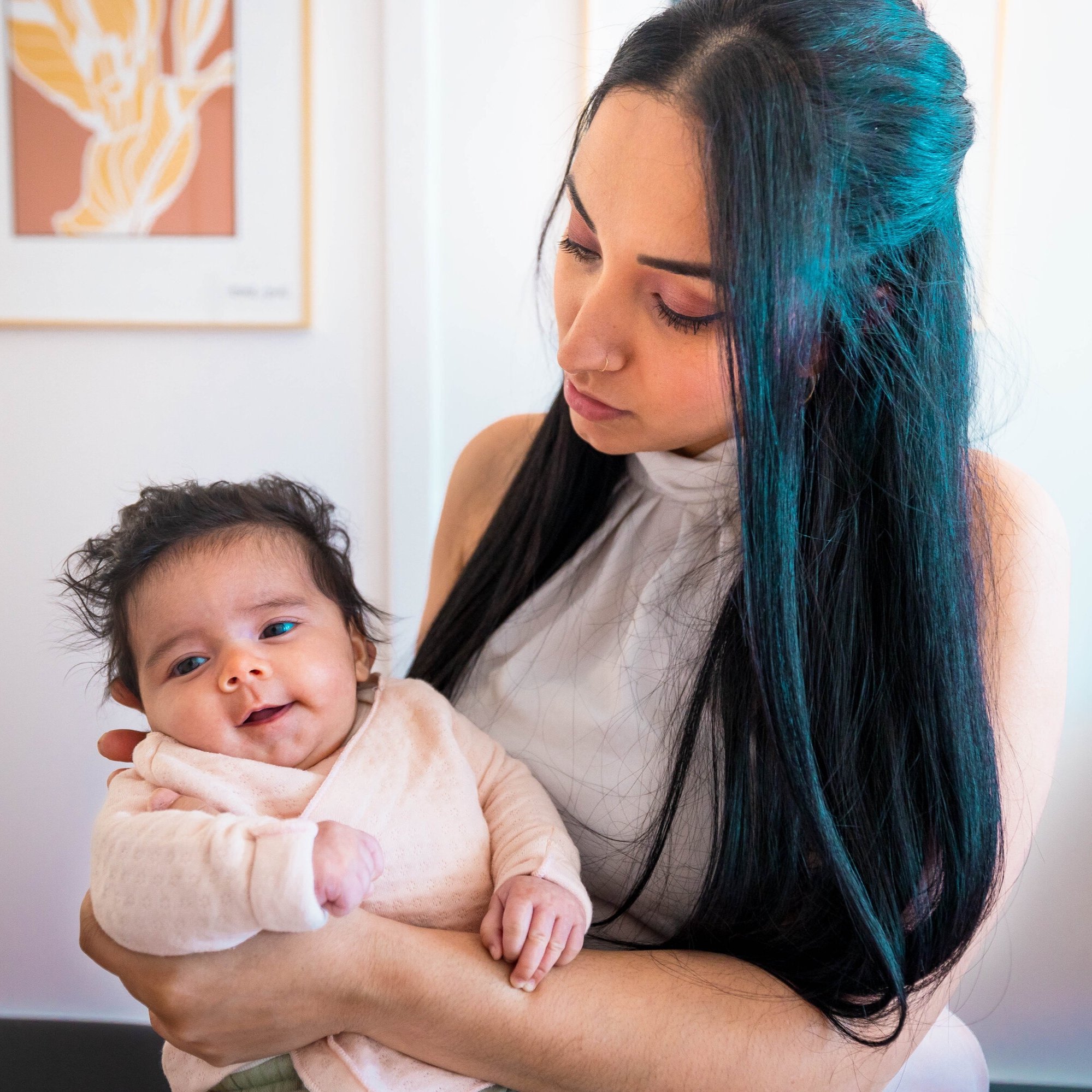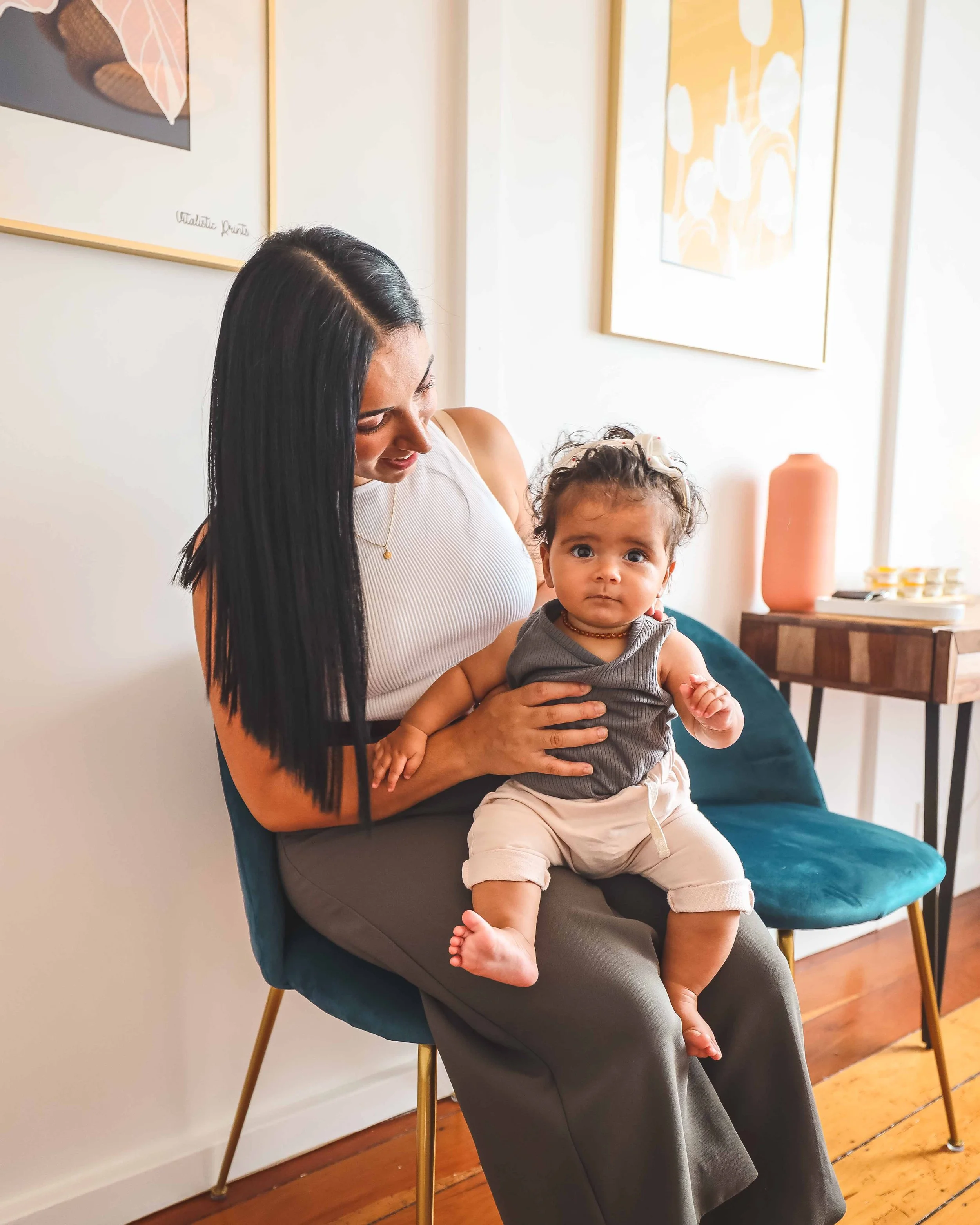
Chiropractic For Babies + Kids
Safe, Gentle + Effective during infancy and childhood
A newborn baby has a nervous system. Their nervous system is protected delicately by their skull and cartilaginous spine.
During the birthing process, physical stress can be placed on the babies’ skull, neck and spine. Physical stress can occur from a natural birth, but more so from physical interventions like ventouse or the use of forceps. Stress to their spine can also be caused before birth from inter-uterine constraint.
Nerve dysfunction caused by birth can result in weakened breathing, irritability, colic, difficulty with feeding and attachment, sleeping problems and neurological defects. Undetected, these problems can sometimes lead to learning difficulties, asthma, repetitive ear infections, hyperactivity and other health problems.
Our Approach For Paediatric Care
Gentle and effective treatment
Comfort with techniques used
Safe for babies and children
Techniques Used At WYLD
Webster Technique
Sacro Occipital Technique
Myofascial Release including round ligament care
Touch and hold
Activator method
Paediatric Chiropractic Techniques including diversified technique
Ensuring your child’s nervous system is functioning optimally by having them regularly checked by a WYLD Chiropractor…
Maximises brain and nerve development
Enhances the child’s overall health and well-being
Strengthens immunity
Improves spinal posture
Assists to better sleep
Enhances concentration and learning
Research was done on one hundred “healthy babies” that did not have any medically diagnosed conditions
90% of these babies had a problem with the way their neck and lower back was moving
Longer labour resulted in greater problems with the way the bones of the spine/skull of the infant was moving
Chiropractic care aims to resolve these issues so that your baby can get the best possible start to life. Better alignment of the spine encourages better brain development and overall health and function.
Paediatric And Kids Initial Chiropractic Consultation + Assessment
When we see newborn patients, its usually from a parent that just wants their child checked – no symptoms.
During the consultation and assessment, our WYLD Chiropractors will assess the full Health history of your baby or child. This will be followed by assessment of their posture, range of motion through their body, nervous system and neurological system. If a baby’s nervous system is out of balance, indicators can include difficulty breastfeeding, being unsettled and sleeping problems.
Chiropractic Adjustment For Babies + Kids
The adjustment to a newborn is very gentle, no popping or cracking occurs during the process. We will use our pinkie finger to apply pressure on a specific vertebra to move a specific direction. The baby without symptoms often will sleep during the entire process.
The baby with symptoms may express some discomfort when the misaligned area is touched, often due to a build up of inflammation in that area. Symptomatic babies are usually brought into our office experiencing ear infections, colic, or digestive difficulties.
Birth Stress + Injuries
The head, neck, or any other part of the spine and pelvis of the infant
have been pulled and twisted during the birth processThe birth process is prolonged
The delivery process is difficult
Extraction aids are used during delivery (i.e. forceps, vacuum, etc.)
The child is delivered by Caesarian section
Injuries resulting from birth trauma may go unnoticed during the delivery process, so you’ll want to assume a neck twisting maneuver likely occurred. Birth trauma (TBS) may be painless in nearly all infants and adults, but there are symptoms that most often occur when the condition has become noticeably symptomatic.
Sleeping Difficulties
Sleep is regulated by the reticular activating system of nerves which are located in the brainstem. When there are misalignments in the cervical spine (known as subluxations) then these nerves can become irritated, causing poor sleep patterns. Typically an infant will then wake at the end of each 50 minute sleep cycle and be more easily disturbed during sleep.
Spinal subluxations may be caused by the birth process, position of the baby in utero and or physical trauma such as falling off the bed or change table.
Breastfeeding Issues
New moms are generally encouraged by their healthcare professionals to breastfeed their baby. Oftentimes this works out well for mom and baby, but there are also many instances where the baby has trouble breastfeeding or mom experiences pain and discomfort.
Breastfeeding can be difficult and may be complicated by a number of factors such as tight muscles in the baby’s jaw or neck, torticollis, or tongue tie. Many of the issues that make breastfeeding challenging may be helped with chiropractic care.
Delayed Developmental Milestones
The birth process may result in musculoskeletal trauma to some babies. This trauma may result in babies having a sore neck, back or shoulder. In some cases developmental delay in babies may be due to the musculoskeletal pain or discomfort.
A baby with a sore neck or shoulder as a result of the birth process may dislike or refuse tummy time. This may cause the baby to be delayed in rolling or crawling. A baby with a sore back may be delayed in standing or walking as the upright position may cause them discomfort. Correcting the misaligned vertebrae may eliminate the discomfort, allowing your infant to start enjoying tummy time, crawling or walking. In these cases the delay has not been due to brain development, the joint problem and associated pain has limited the progress.
Age/Behaviour
Birth: Sleeps most of time, can eat, clear airways, and respond with crying.
6weeks: Regards objects in the line of vision, Begins to smile when spoken to, Lies flat on abdomen, Head lag on pull to sit
3 months: Smiles, vocalizes and follows moving object with their eyes. Holds head steady on sitting. Grasps objects placed in hands
6 months: Sits with support and rolls over. Babbles to toys. Transfers an object from hand to hand
9 months: Sits well, crawls, and pulls themselves to standing position. Says “ mama” and “dada”; plays pat-a-cake. Waves bye- bye and holds their bottle
1 year: Walks with their hands held. Speaks several words and helps dress themselves
18 months: Walks well, can climb stairs holding on. Turns several book pages at a time. Speaks about 10 words. Pulls toys on string and partially feeds themselves
2 yrs: Runs well, climbs up and down stairs alone. Turns single book pages, puts on simple clothing. Makes 2-3 word sentences, and verbalizes toilet needs
3 yrs: Rides a tricycle, dresses well except for buttons and laces. Counts to 10 and uses plurals. Questions constantly and feeds themselves well
4 yrs: Alternates feet when going up and down stairs. Throws a ball overhand, hops on one foot, copies a cross. Knows at least one colour, washes hands and face. Takes care of toilet needs
5 yrs: Skips, catches a bouncing ball, copies a triangle, knows 4 colours, and dresses and undresses without help
Head Shape Abnormalities
It is important to get help from one of our WYLD Chiropractor as early as possible to assist in treatment of asymmetrical neck muscles, torticollis and the associated plagiocephaly. We use gentle pressure and safe techniques to encourage proper and full cervical motion, cranial motion and muscular control. We can also help you with any questions you have on positioning, play time and other methods of decreasing plagiocephaly at home.
The aim of care is not only aesthetics but also to restore full range of motion, allowing full visual and auditory stimulation. We aim to maintain the motion of the cranial bones to that as the brain grows, the skull is symmetrical as is neurological function. We want your child to reach their full potential, not to be held back by delayed milestones and development.
Remember the younger the age of the child when starting care the more likely complete resolution can be achieved.
Scaphocephaly: A long, narrow head is common with midline “sagittal" synostosis, when the suture extending from front to back over the top of the head fuses too soon. Sagittal synostosis is the most common form of craniosynostosis, accounting for about 40% to 45% of cases
Trigonocephaly: A forehead that is pinched on the sides with a ridge running from the bridge of the nose to the soft spot on top of the head signals a “metopic" synostosis
Anterior Plagiocephaly: An asymmetric head and face with a flattened forehead, a raised eyebrow, and a deviated nose can result from “coronal" synostosis on one side
Brachycephaly: A flatted and/or tall forehead, usually with pronounced flattening of the cheeks, a small upturned or “beaked" nose, and bulging eyes from “coronal" synostosis on both sides. This is often present in medical syndromes that involve the face and skull
Posterior Plagiocephaly: An asymmetric head with a pronounced ridge on the back of the head and a large bump behind the ear may result from “lambdoid" synostosis, which is the rarest form
Colic
There's evidence that baby chiropractic adjustments significantly improve colic symptoms. A 3-monthlong scientific study conducted in 2012 established that chiropractic care may help treat colic. In the study, fully 94 percent of the subjects experienced improved colic symptoms.
Gentle adjustments may assist in removing nerve interference to restore normal function of the digestive tract and support digestion to alleviate symptoms of colic.
Chiropractic care is a natural, safe, and effective way for parents to help children with colic.
Behavioural Abnormalities
Health conditions in children, such as attention deficit hyperactivity disorder (ADHD) or autism, may increase their chances of displaying behavioral issues.
Spinal nerves connect the brain to other nerves in most parts of the body. These nerves communicate and send messages back and forth between them to perform actions or speak.
When a person suffers from spinal cord injuries or spinal misalignment, it negatively impacts their central nervous system (CNS). The CNS controls most functions in the mind and body, such as behaviour and physiological processes.
A chiropractor can help realign your child’s spine and this may help to improve their behaviour and overall mental health.








